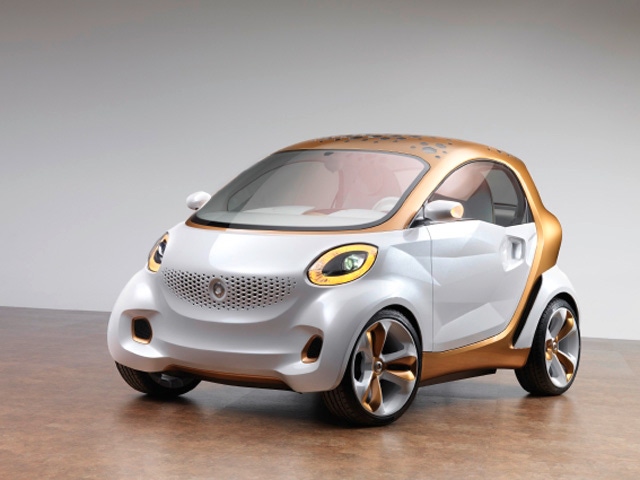Daimler (Stuttgart) and BASF (Ludwigshafen) have developed a new concept vehicle that combines both companies' ideas for electric mobility. One of many industry firsts in the vehicle is the use of polyamide (PA) in the wheels. The smart forvision will have its world premiere at the 64th International Motor Show in Frankfurt later this month.
September 2, 2011

Daimler (Stuttgart) and BASF (Ludwigshafen) have developed a new concept vehicle that combines both companies' ideas for electric mobility. One of many industry firsts in the vehicle is the use of polyamide (PA) in the wheels. The smart forvision will have its world premiere at the 64th International Motor Show in Frankfurt later this month.
|
Plastic wheels are solar panels are among the energy-saving technologies deployed in the smart forvision. |
|
The partners have succeeded in combining no less than five automotive world premieres in the new concept vehicle. Transparent organic solar cells, transparent organic light-emitting diodes, the all-plastic PA wheels, new lightweight body components and infrared-reflective films and coatings all help to reduce the vehicle's energy consumption and so increase its range and practicality.
Besides the use of Ultramid PA in the plastic wheels that saves 30% weight compared with metal, fiber-reinforced plastics have been employed in load-bearing components in the vehicle chassis to further reduce weight and minimize the drive energy requirement.
The heating and air conditioning systems in vehicles are major consumers of energy. The amount of energy needed to heat up or cool down the vehicle's interior can be reduced with the help of a comprehensive temperature management system that uses innovative materials such as polymer films in the windows to reflect thermal radiation and high-performance insulating materials.
The smart forvision also features power-generating solar cells based on organic-chemical dyes on the roof. Combined together with energy-saving organic light-emitting diodes (OLEDs), the vehicle's roof, which is covered in solar cells, is not just environmentally friendly, but a real design highlight as well.
About the Author(s)
You May Also Like



